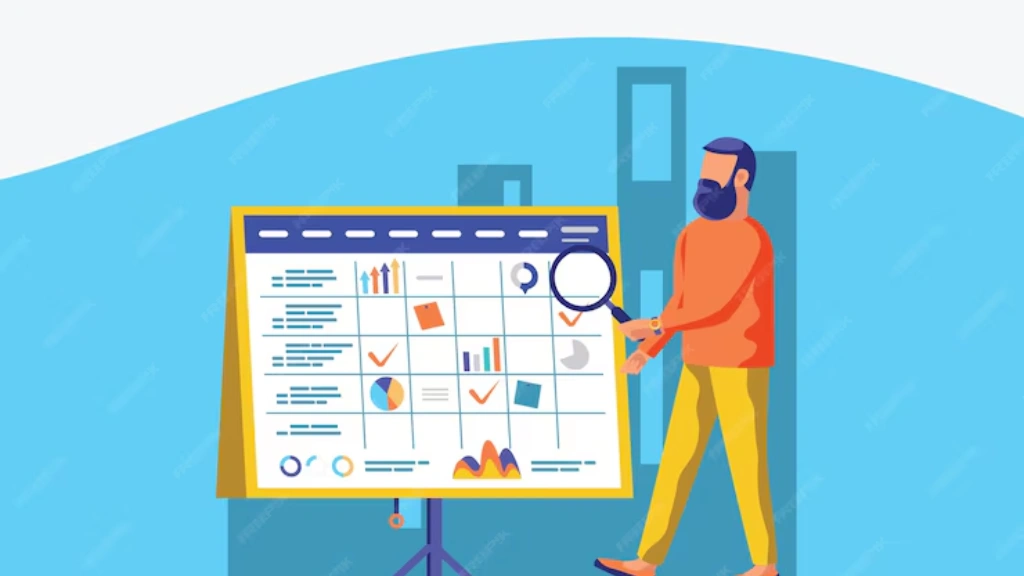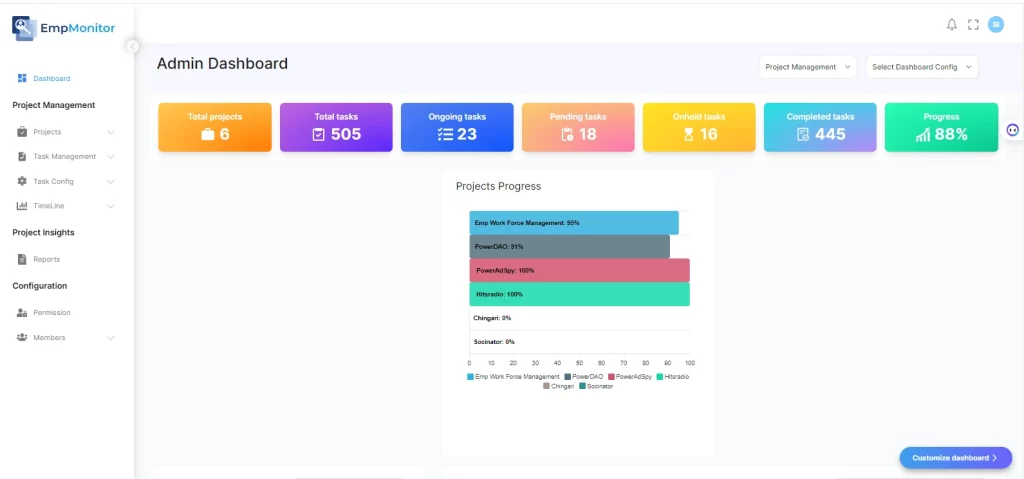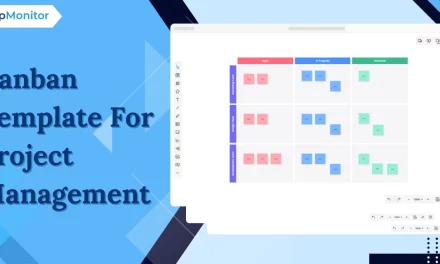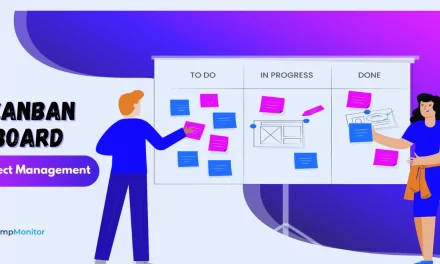A project’s success depends on numerous factors: a cohesive team, efficient resource management, and robust risk management techniques, to name a few. Yet, before any of these elements come into play, a clear and comprehensive project outline is essential. The project outline serves as the roadmap, guiding the team towards achieving the objectives. Without this initial spark, it is easy to lose direction and miss crucial milestones.
Understanding how to craft a well-structured project plan overview is fundamental for any project manager. This blog lays the groundwork for all subsequent activities in a project outline and ensures that every team member aligns with the project goals and objectives from the outset. It provides a clear vision, sets expectations, and helps identify potential challenges early on.
By mastering the art of writing a project outline, you set the stage for a successful and well-managed project. This initial step is crucial for maintaining focus, ensuring efficient use of resources, and achieving the desired outcomes within the set timelines. So, let us begin the blog.
Listen To The Podcast Now!
What is a Project Outline?
A project outline is a document that provides all the necessary information about a project in a clear and easy-to-read format, along with a brief description, company goals, objectives, timeframe, probable risks, and things needed.
Your project plan outlines the steps your project will take as it progresses.
A project outline guarantees that the team and their supervisors agree and gives project managers a quick overview of their work.
To streamline project outline process, consider using EmpMonitor, a project management software that excels in task creation and managing project timelines. With EmpMonitor, you can effortlessly track your project’s progress, ensuring every detail is covered and every deadline is met.
Who Should Create A Project Outline?
Usually, the project manager is the primary person in charge. However, those responsible for creating a project outline also rely on project specifics and whether it will be used internally or externally.
When creating their project outline, the project manager may, depending on the circumstances, confer with essential decision-makers, clients, stakeholders, external service providers, team members, and other employees of the business.
The project manager will probably deliver the project outline if it is being utilized externally as a project proposal.
Benefits of Project Outline
A well-crafted project outline can majorly impact the success of a project. Take a brief look at some of the main advantages. –
Improved Time Management
Team members can better manage their time when there is a project overview with clear deadlines for each work. They can set priorities, schedule time effectively, and prevent last-minute scrambling to fulfill deadlines.
Clearer Visibility Into Project Success
Team members may transparently see the overall project status with the help of a comprehensive project tracker that outlines deliverables and milestones. As kids fulfill goals and milestones, this builds a sense of success that raises spirits and motivation.
Enhanced Collaboration and Teamwork
A clearly defined outline fosters collaboration by emphasizing task dependencies and demonstrating how individual contributions fit under the larger picture. It motivates team members to collaborate toward common objectives, support one another, and communicate clearly.
Reduced Confusion and Frustration
Imagine team members stumbling to grasp project requirements or exerting unnecessary effort due to ambiguous work allocations. That is an assured way to go wrong.
A thorough overview reduces uncertainty, clarifies individual duties and responsibilities, and eases team confusion and annoyance.
Reduced Risk of Scope Creep
Uncontrolled additions of features or jobs, or project scope creep, can throw plans and finances for a loop. A project outline template serves as a safeguard by precisely outlining the parameters and deliverables of a project. Team members can prevent needless effort and ensure the project stays focused on its primary goals by reviewing the outline frequently to spot any scope creep.
Main Components of Project Outline
One of the best things about project outlines is that you can customize them to meet the specific needs of your project. However, project outlines have the following essential components:
- Basic Information – Never undervalue the significance of always having access to crucial information about your project. Always provide details about the project, its name, status, the project manager, the team, and other significant stakeholders or decision-makers.
- Executive Summary – Give a brief yet thorough summary of the project.
- Project Background – Explain the background of your new project and the motivations of your team working on it. Be sure to include evidence for the methodology used in your task and project management plan.
- Statement of Work – Above all, consider the scope of your project. List the components that are and are not a part of your work.
- Project Objectives, Constraints, Project Risks, Assumptions, Dependencies
- General Project Timeline – Stay focused on the main points, and don’t get mired down in the minutiae. Gantt charts are occasionally fashioned like this, particularly for intricate projects.
- Project Budget and Other Financial Information-
How To Create a Solid Project Outline?
Let us look at the common elements and standard structure followed universally.
Step 1: Describe the Project
To create a project outline, you must explain your project and include all the essential information. It should be a brief paragraph containing crucial information about the project, including the project name, its date, the project manager, the allocated team members, and any other relevant details.
Here, you can also provide a brief overview of your initiative and explain the circumstances behind its inception.
Step 2: Define Objectives and Goals
Establishing the aims and objectives of your project is the next stage. It will give you direction and serve as the foundation for your complete project outline.
Here, you will precisely specify what you hope to achieve by the project’s conclusion. Here is where you should lay out the main aims and objectives in terms of figures and quantifiable measures.
By doing this, you will be able to assess how well your business is performing about your missions and objectives and determine how well you are doing in terms of reaching your objectives.
Step 3: Write an Executive Summary
An executive summary is a part that provides a concise overview of the main points of your project. It is to ensure that everyone on your team knows what they will be handling.
Here, you can highlight the main points of your project overview and briefly explain each crucial component in a few phrases.
It might include the goals and contents of your project and other pertinent information. It is also a better place to discuss your purpose and the specific goals you have in mind.
Step 4: Develop a Scope of Work
Scope of work is a document that outlines the tasks and methods associated with each task. Typically, it includes deliverables, schedules, reports, milestones, and the final goods.
There are several steps in the process, including creating an overview, deciding who will work on the project, what needs accomplishment, who needs resources, and how much the project will cost.
It is also where you might describe the strategy or process you plan to employ to finish your project.
Step 5: Set a General Project Timeline
Your project outline should include a broad project timeframe that everyone can follow. Thus, you must prioritize a timeline, paying particular attention to due dates and other milestones for finishing projects’ responsibilities.
You can even provide exact dates and a timeline breakdown to help your team members understand how long they should spend on their duties to complete the project on time.
Step 6: Outline a Budget
You should create a budget to determine how much you may spend on your initiatives. For this reason, you must include a distinct part of your project that details the budget.
It is where you may lay out your costs, assess how they stack up against past projects, and identify where your budget will fall. Make sure you allow for extra leeway to cover unforeseen hazards.
Step 7: Assign Tasks
The following stage is to assign your team members particular responsibilities inside the project after you’ve established your goals and created a timeframe.
Ensure that each team member has clear duties and tasks & capable of fulfilling these responsibilities. It will guarantee the success of your project.
Step 8: Determine Risks
There will always be risks and issues with a project, so you must identify and prioritize any possible danger that might come up during the project’s duration. You can also briefly discuss how your group could attempt to reduce those risks and problems here.
It will assist your staff members in being ready for any risks and issues that might emerge during their tasks.
Step 9: Proofread
Finally, proofread your work to ensure the message is understood and includes all the essential aspects.
Look for typos, grammatical faults, spelling issues, and poorly written phrases. Make sure someone else or a coworker reviews your proposal to ensure everything is correct.
And just like that, you have the best project outline!
Also Read:
05 TIPS TO CREATE EFFECTIVE COMPANY GOALS THAT INSPIRE EMPLOYEE ENGAGEMENT
TASK AND PROJECT MANAGEMENT: INSIDER TIPS FOR SUCCESS
Best Tips for Creating a Project Outline
Creating the best project plan will help you start your project on the right foot and in the right direction. You might wonder, what steps must I take to create a good project plan?
While there are many different ways to begin a project outline, the following tips will undoubtedly be helpful to you no matter which way you go:
Keep It Simple
Avoid the pitfalls of employing technical terms and highly stylized language. As many individuals as possible should be able to understand your project plan with ease. Make your writing easy to read and understand. Ensure that your project overview is easily understandable to others at first glance.
Brainstorm as a Team
“Collaborating from the outset is the most effective approach to ensure the project’s success.” After all, two heads are better than one. Or many heads. When starting to create your project overview, gather all of the essential participants in your project and solicit their opinions and suggestions. We can assure you that it will produce superior results.
Consider Various Perspectives
By the time your project comes to a close, several people have likely read your project blueprint. Make sure you consider multiple viewpoints when assembling it to guarantee that everyone will be able to understand it effortlessly. “What information will key stakeholders want to see included here?” is one question you should ask yourself, along with “What essential details do I need to include for my project team?”
Assemble the Team based on Strengths.
The project planning process should start with creating your project outline example. As your project concept is being developed, take advantage of the chance to assemble the best possible group to work on your project. Choose members of your project team based on the skills and qualities you know they will bring to the table if you are the project manager or someone else responsible for the project.
Be Realistic
You will frequently refer to project outline examples as essential project management tools. Thus, it is critical to maintain their realism. Do not commit to something you think would not be feasible or unduly ambitious with your project ambitions. Try hard to be accurate, truthful, and practical with the information in the project outline sections. Later on, you and your project team will be grateful to us.
Delegate Away
Big projects, in particular, tend to get complex very quickly. Reduce some of those complexities by assigning assignments as soon as possible. Creating a project overview is an ideal opportunity to form subcommittees and assign tasks to team members. It’s also essential to assess if you require external contractors or service providers.
Determine Scope and Stick To It
Determining the project’s scope is one of the most crucial steps in creating a project overview. Project scope is essential to any project management procedure to define what falls within and outside the project’s boundaries. Establish the scope of your project early on in the project outline generation process, and then follow through on it!
You can also use various project management software to improve your project productivity. It majorly helps you create a project tracker for your team, helping you increase the efficiency of the project. One such project management software is EmpMonitor. Let us have a look at some of its amazing features.
EmpMonitor – The Best Project Management Software
EmpMonitor is a robust and reliable employee monitoring tool that can monitor your workforce, helping you track the employees’ computer activity.
With over 500k+ employees tracked across 100+ countries, EmpMonitor serves its features across various business aspects like IT Industry, Banking, Healthcare, Education, etc.
It provides some key features like monitoring team performance, managing a distributed workforce & enhancing security measures that help increase productivity at work.
Considering the necessity of project outline, EmpMonitor offers a variety of features:
Project Management
EmpMonitor helps you to assign tasks to your team, monitor their work, and manage the entire project from start to end. It lets you get a clear picture of the project work, ensuring the team is productive and in the right direction.
For project management, EmpMonitor offers features like:
Customized Access Level – It offers customized access levels for every member, guaranteeing they have just the appropriate amount of access.
Role Assignment – EmpMonitor helps you assign individuals to specific roles that clearly define their tasks and talents.
Member Groups– You can divide the team members into groups to streamline the cooperation and communication for smooth operation.
Timeline Monitoring– For ultimate project control, EmpMonitor lets you monitor the whole duration of your project, documenting task creation, modifications, and completions.
Task Handling and Subtask Creation This workforce management software manages tasks with CRUD(Create, Read, Update, and Delete) operations effortlessly, including fetching, searching, filtering, and generating reports.
Moreover, it breaks down the tasks into subtasks for unparalleled project control and tracking, ensuring no detail is overlooked.
Productivity Tracking
This software delivers visibility into the employee working hours, helping you get a clear view of whether employees are proactively engaged while being productive. The in-depth categorized data of employee working hours, productivity, and ideal hours will help you increase workflow efficiency and create a well-functioning team to meet your business’s target goals.
Attendance Logs
EmpMonitor helps you keep a record of the exact login and logout time of your entire team for the last seven or more days as per your requirement through this time and attendance tracking software. It helps you accurately track the working hours of each employee.
Final Thoughts
As you can see, project outlines are helpful little documents that, when done correctly, may greatly assist your project management process. They serve as helpful manuals that you may use at any point while working on your project, and they are beneficial internally and externally.
It is well worth the time to put together a solid project plan at the beginning of your project. You may quickly get started on the correct track by consulting this article (as well as our free template) whether you are working on one now or want to do so shortly.
In addition, utilizing tools like EmpMonitor can elevate your project management process. Insights into team productivity and performance are provided by EmpMonitor, enabling optimal resource utilization and early detection of potential issues. By combining a solid project outline with the powerful features of EmpMonitor, you set the stage for a streamlined and successful project execution.
Frequently Asked Questions
Can a project outline be modified once the project has started?
Yes, you can modify a project outline as the project progresses. However, any changes should be documented and communicated to all stakeholders to ensure everyone remains aligned with the updated plan.
Can a project outline be integrated with other project management documents?
Yes, you can integrate a project outline with other project management documents, such as the project plan, risk management plan, and communication plan. This integration ensures consistency and provides a comprehensive project view, facilitating better management and execution.
What is the role of milestones in a project outline?
Milestones are significant points or events in a project timeline that mark critical stages of progress. They keep track of the project progress, ensure that deliverables are completed on time, and provide a clear progress indication.















